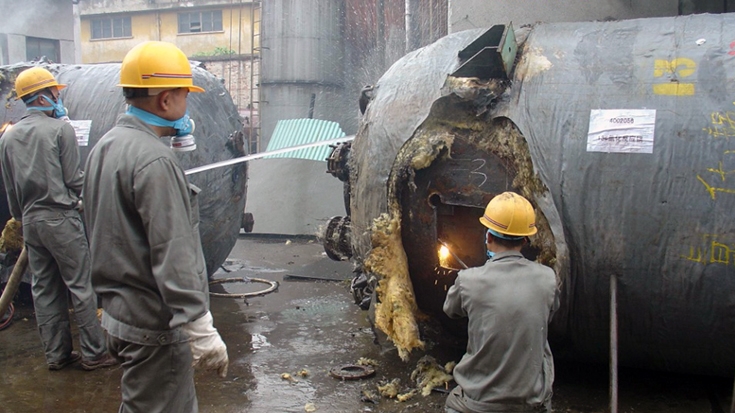“Management and phase-out of ODS in the production sectors is the most effective way to achieve elimination. Through quotas management, China’s HCFC production in 2013 was reduced by 8.38 percent over the baseline year (2009-2010 average), and consumption reduced by 9.14 percent over the baseline year,” said Vice Minister Zhai Qing of China’s Ministry of Environmental Protection. “This is an important step and a significant milestone in the first stage of China’s HCFC phase-out effort.”
“However, there remain many difficulties and challenges on the way ahead,” he said. “We just completed freezing of HCFC, and the pressure for its phase-out is increasing. We have to put in greater efforts in developing and expanding the use of sustainable substitutes. The theme of this year’s International Ozone Day -- the Mission Goes On -- reflects the need to continue the global efforts in protecting the ozone,” he added.
Since April 2013, the Government of China, in concert with the World Bank Group, has been working with enterprises on the first stage of China’s HCFC production sector phase-out plan, itself part of a larger strategy to completely eliminate the country’s production capacity of ozone depleting substances by 2030. This stage is supported by an USA $95 million grant from the Multilateral Fund for the Implementation of the Montreal Protocol (MLF), which disburses against verified annual reductions of HCFC production levels.
“China is a key player in the Montreal Protocol’s HCFC phase-out objectives,” said Bert Hofman, World Bank Country Director for China. “Today’s announced decrease in China’s HCFC production is a major step in the direction of meeting China’s Protocol obligations ahead of schedule. It also generates major benefits in the battle against climate change: The reductions equate to taking approximately 19.5 million cars off the roads, or eliminating annual emissions from 24 coal-fired power plants.”
"As China is the single biggest producer of HCFCs today, such early achievement is laudable,” explained Tina Birmpili, the Executive Secretary of the Ozone Secretariat of UNEP. “Under its HCFC strategy, China will phase out its HCFC production, contributing not only to protect the ozone layer but also to mitigate climate change because HCFCs are also powerful greenhouse gases. The funds from the MLF will cover the incremental costs of the phase out, but clearly China’s own effort and contribution is the key. China and its people will be putting in a lot of work and effort. China has a unique opportunity to proceed with its production sector project in a manner that demonstrates leadership in ensuring the success of the Montreal Protocol," she said.
The first stage of China’s HCFC production closure effort will also yield important climate co-benefits that result from avoided CO2 emissions, through cessation of production of high-GWP HCFCs, as well as from elimination the related off-gases of hydrofluorocarbons (HFC-23) at two of the enterprises. The five enterprises include Yingpeng Chemical Co., Ltd., Zhejiang DongYang Chemical Co., Ltd., Jiangsu Blue Star Green Technology Co., Ltd., Hangzhou First Chemical Co., Ltd., and Yantai Zhongrui Chemical Co., Ltd.
These actions form part of a long-standing, ongoing partnership between the Government of China and the World Bank that has, over more than two decades, helped ensure the fulfilment of China’s obligations under the Montreal Protocol ahead of schedule. Over the years, results achieved have encouraged cooperation between research and production, supported trade and competitiveness in China and beyond, enhanced awareness regarding environmental sustainability, and contributed important co-benefits through climate change mitigation. This partnership has phased-out more than 219,000 tons of ODS from various sectors and also resulted on avoided emissions of 885 million tons of CO2 equivalent which compares to eliminating the annual emissions of more than 186 million passenger vehicles.
~~~~~~~~~~~~~~~~~
Since 1987, the mission of The Montreal Protocol has been to protect the ozone layer. While much success has been achieved, the 197 Parties to the Protocol currently face a phase-out schedule for remaining ozone-depleting chemicals that stretches to 2040.
The Multilateral Fund for the Implementation of the Montreal Protocol was established in 1991 to assist developing countries meet their Montreal Protocol commitments. Managed by an Executive Committee with equal membership from developed and developing countries, the Fund has, to date, approved activities including industrial conversion, technical assistance, training and capacity building worth over US $3.0 billion.

